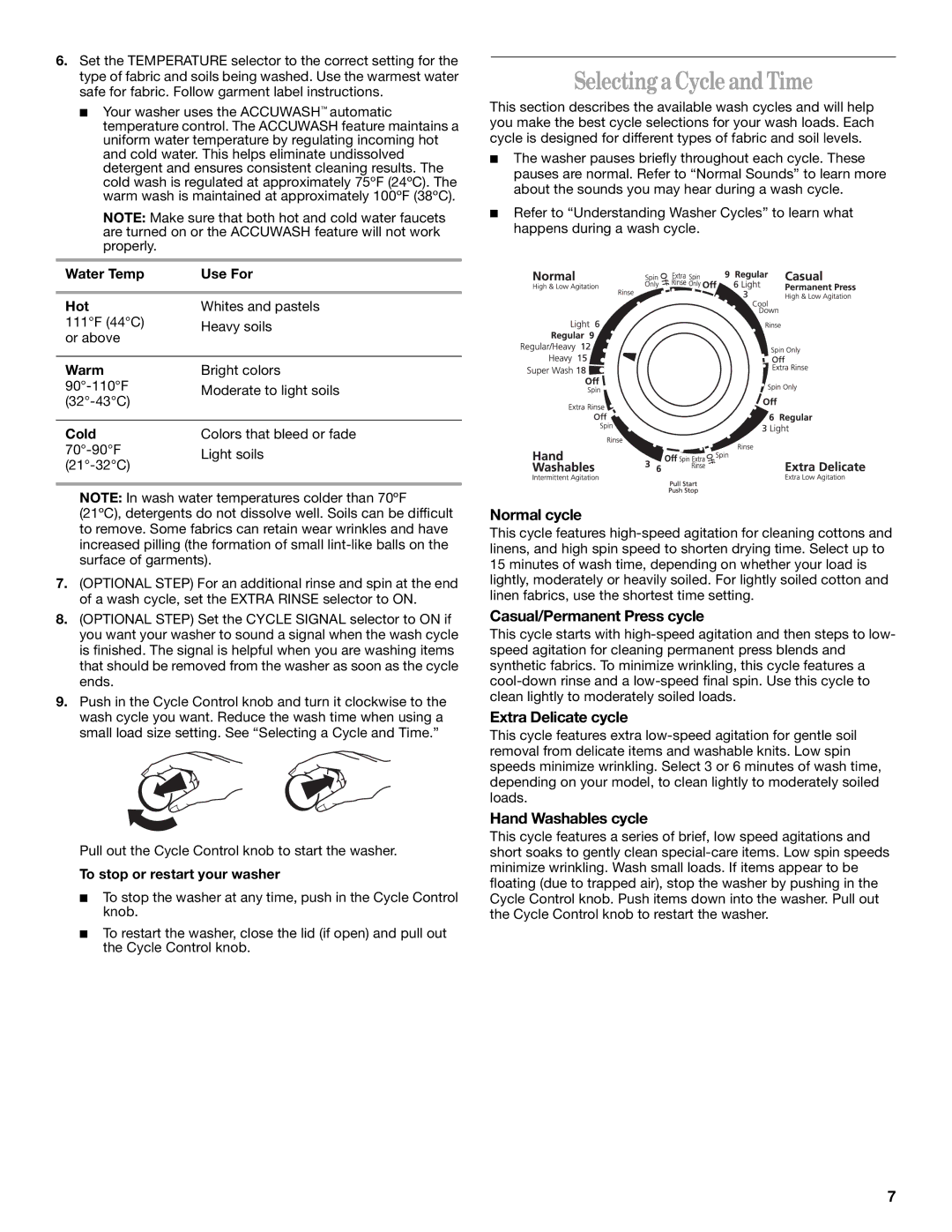
6.Set the TEMPERATURE selector to the correct setting for the type of fabric and soils being washed. Use the warmest water safe for fabric. Follow garment label instructions.
■Your washer uses the ACCUWASH™ automatic temperature control. The ACCUWASH feature maintains a uniform water temperature by regulating incoming hot and cold water. This helps eliminate undissolved detergent and ensures consistent cleaning results. The cold wash is regulated at approximately 75ºF (24ºC). The warm wash is maintained at approximately 100ºF (38ºC).
NOTE: Make sure that both hot and cold water faucets are turned on or the ACCUWASH feature will not work properly.
Water Temp | Use For | |
|
| |
Hot | Whites and pastels | |
111°F (44°C) | Heavy soils | |
or above | ||
| ||
|
| |
Warm | Bright colors | |
Moderate to light soils | ||
| ||
|
| |
Cold | Colors that bleed or fade | |
Light soils | ||
|
NOTE: In wash water temperatures colder than 70ºF
(21ºC), detergents do not dissolve well. Soils can be difficult to remove. Some fabrics can retain wear wrinkles and have increased pilling (the formation of small
7.(OPTIONAL STEP) For an additional rinse and spin at the end of a wash cycle, set the EXTRA RINSE selector to ON.
8.(OPTIONAL STEP) Set the CYCLE SIGNAL selector to ON if you want your washer to sound a signal when the wash cycle is finished. The signal is helpful when you are washing items that should be removed from the washer as soon as the cycle ends.
9.Push in the Cycle Control knob and turn it clockwise to the wash cycle you want. Reduce the wash time when using a small load size setting. See “Selecting a Cycle and Time.”
Pull out the Cycle Control knob to start the washer.
To stop or restart your washer
■To stop the washer at any time, push in the Cycle Control knob.
■To restart the washer, close the lid (if open) and pull out the Cycle Control knob.
Selectinga Cycle andTime
This section describes the available wash cycles and will help you make the best cycle selections for your wash loads. Each cycle is designed for different types of fabric and soil levels.
■The washer pauses briefly throughout each cycle. These pauses are normal. Refer to “Normal Sounds” to learn more about the sounds you may hear during a wash cycle.
■Refer to “Understanding Washer Cycles” to learn what happens during a wash cycle.
Normal cycle
This cycle features
Casual/Permanent Press cycle
This cycle starts with
Extra Delicate cycle
This cycle features extra
Hand Washables cycle
This cycle features a series of brief, low speed agitations and short soaks to gently clean
7
